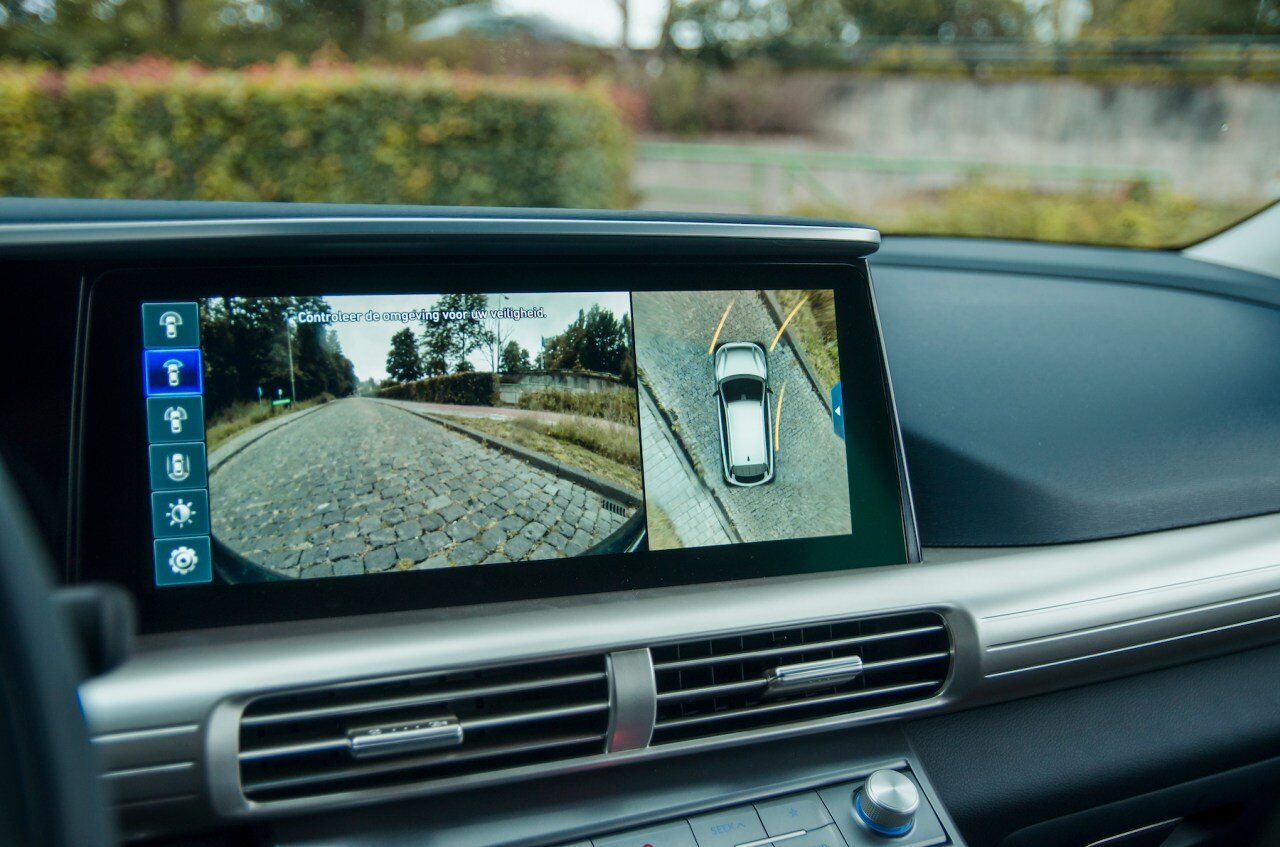Hyundai Nexo | Ambassador for Energy Transition?
The Hyundai Nexo is something we've never encountered before. ICEs, BEVs, PHEVs, etc, we've driven them all. However, we've never had the opportunity to drive an FCEV, until now. That's right, the Nexo is a hydrogen-powered car.
Emission regulations are getting stricter, and the industry is on the hunt for a replacement fuel. FCEVs combine the emission-free drive with very little charging - refueling - times and maintaining a decent range. We take a closer look at the Hyundai Nexo to find out what an FCEV is like.
Nothing new?
To start off, let's neglect the fact that this Hyundai uses an unusual drive train. Due to its presence that tends to be more subtle than extremely futuristic, you wouldn't directly classify the Nexo as an FCEV. The driving experience too isn't all that different than you'd expect.
When you get inside, the first thing I bet you notice is that the center console is absolutely littered with physical buttons. It takes a minute or two to get used to, but operating those buttons made me wondering why everything is controlled via a touch screen these days.
Moving on, the gear selector you'd expect to find is replaced by push buttons as well. Press "Drive" and the Nexo starts creeping forwards when you release the brake, just like any other car - nothing new yet. The electric motors are quiet and the torque is instantly notable.
Being brutally honest, you can't really prevaricate the fact that this drive train is so special. Start her up, and the central display shows a water droplet animation, reminding you that this isn't just any other EV. Floor it, and the silence makes way for a gentle buzz that comes from the engine compartment to let you know that something special happening there.
Drive train
To untangle any misconceptions right away: an FCEV doesn't burn hydrogen. In fact, the hydrogen that enters the Nexo isn't even considered a fuel. It's an energy carrier. The fuel cell converts hydrogen and oxygen in ambient air to water and electricity - exactly, the exact opposite of what you need to produce hydrogen. Therefore, the only emission is water vapor. The electricity is then used to power the motors or can be temporarily stored in the 1.56 kWh battery to boost its efficiency. Depending on the energy demanded by the motors and the driving conditions, the electricity flows either to the motors directly or to the battery.
The lack of hydrogen availability makes the driver very aware of the remaining range. Given the fact that modern - everything is relative - FCEVs require hydrogen at 700 bars instead of 350 bars (and so excluding certain hydrogen stations) makes up for slight discomfort when thinking about longer trips.
What is it like to drive?
As mentioned before, the driving experience isn't too far off from a regular EV. It's nicely quiet and comfortable. Turn the two-spoke steering wheel and you'll feel that the heavy assistance doesn't compliment the connection to the road - the Nexo is a comfortable SUV after all. You can choose between 3 driving modes: normal, eco, and eco+. The last mode automatically limits your top speed to 100 kph and increases regenerative braking.
Practicality and packaging
The Nexo houses a number of components that disadvantage its practicality. Other than a battery and an electric motor there is a fuel cell module and a hydrogen tank. This results in the bulky size of FCEVs, as another hydrogen car on the market, the Toyota Mirai vouches (measuring similar outer dimensions).
Though interior space is good, the trunk floor is quite high. Only measuring 461 liters it is out of proportion to the exterior dimensions. However, Hyundai claims that the Nexo still has the largest trunk of any FCEV on the market. There isn't a huge battery underneath the seats, so there's plenty of headroom in the front. The headroom in the back gets slightly compromised by the sidelong slope of the roofline. The heated and cooled front seats are perfectly comfortable and finished in premium materials.
A neat feature is the projection of your blind spot. It is shown by cameras in the mirrors on the screen in the gauge cluster when you use the indicators. The infotainment system is easy to operate and the screen is clear enough. My only complaint is that you can't operate the central screen with buttons on the steering wheel. While driving, the infotainment system provides insight into the energy flow, shown in a schematic representation of the vehicle. The camera system as well works fine and the top view of the car helps you a lot in overviewing your surroundings.
Filling up an FCEV
Filling up an FCEV is nothing different than filling up your petrol car. At the hydrogen pump you select the correct fuel, H70 in the case of the Nexo. H70 is hydrogen stored at 950 bars, which effectively fills up the tank to 700 bars. You simply click on the nozzle and press start. The car will now fill up until the back pressure from the tank reaches 700 bars, at which the operation automatically stops. The quick decompression actually freezes the bayonet.
For your information, in The Netherlands H70 is priced at around €12 per kilogram. The Nexo stores 6.2 kilos of hydrogen, so a full tank will cost you around €70. Hyundai claims that the Nexo will reach up to 665 kms with a full tank. Compared to fuel prices in The Netherlands, that is in the same order as a full tank of petrol.
In The Netherlands in 2020, there are only 5 stations with consumer-available hydrogen. The hydrogen pump close to my place is only accessible with a fuel card. The one from Hyundai Belgium sadly was expired without any notice at the time I got my hands on it. That meant that I had to travel 50 km to the closest available hydrogen station every time I needed to fill up the Nexo. Luckily for me, that was no problem. It just emphasizes the scarcity of hydrogen stations.
Price
To justify the price of the Nexo, it felt like Hyundai threw everything they had at it. The high level of equipment sugarcoats the relatively expensive technology used in the drive train. Nicely upholstered seats, wireless charging, a panorama roof, and adaptive cruise control are what you'd expect at this price point, which the Nexo has. On top of that, it has cooled seats and a gimmicky remote driving (parking) option via the Smart Key. At over 80.000 euros, it won't come cheap.
Verdict
The hydrogen theme is distinctively intertwined in the car. It proudly shows the amount of CO2 that has not entered the atmosphere. However, in the driving experience itself, you hardly notice any difference to a regular EV. Unlike any other car that pioneered with clever new technologies, the Nexo doesn't feel compromised. The Hyundai Nexo clearly is a car that you can live with, as long as you have hydrogen at your disposal. In short, like a car, it's very comfortable, it feels well put together and comes with loads of options as standard. As an ambassador for the implementation of hydrogen energy in the society, it's an absolute winner.
Power/torque: 163hp/395Nm
Range (Hyundai): 665 km
Range (tested): 523 km
Consumption (tested): 1.1 kg/100km




















